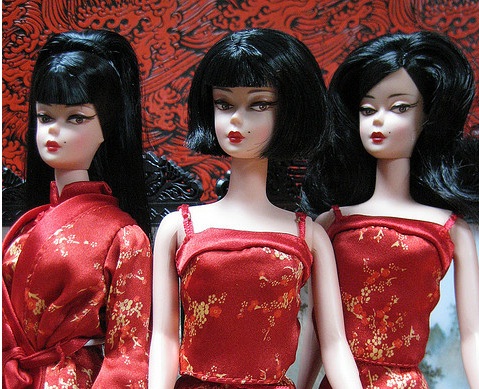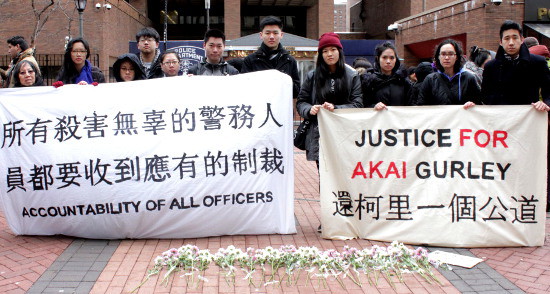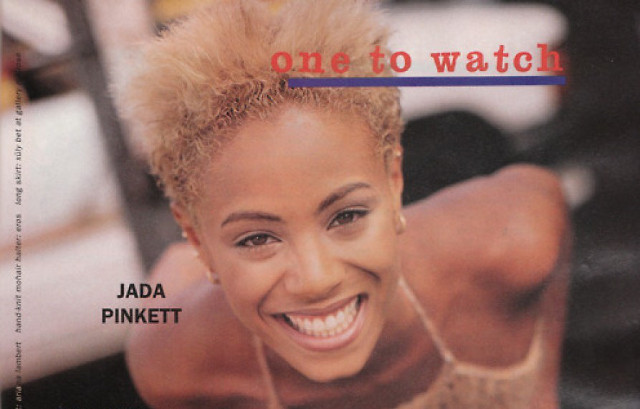The ‘90s saw Western designers outsourcing not just manufacturing, but inspiration, to Asia.

June 6, 2012
AFTER 1989 is a series that reexamines the intersection of race and pop culture during the ’90s.
For dedicated fashionistas, the 1990s will always be remembered as a heyday of Asian chic. So-called Asian shapes, fabrics, iconography, and colors showed up both on the runways of Yves Saint Laurent and Gucci and on the mass-market racks of Urban Outfitters and Target. Celebrities and socialites slipped on kimonos, cheongsams, and salwaar-kameez for the red carpet, and magazines and newspapers filled their pages with countless “East meets West” photo shoots. In this decade, Asian chic dominated the fashion landscape.
What does it mean to be inspired by Asia? We all know that fashion has long been indebted to the continent, to the textiles it exports and certainly to the labor that it employs. We know that designers use its workforce to make clothing, but what happens when they outsource not just their manufacturing but their inspirations to Asia? What does it mean for them to borrow so freely from the East?
In one sense, this cultural appropriation is just the business of fashion. Designers recycle styles, forms, and images; these are accepted norms. When Balenciaga designer Nicolas Ghesquière was revealed by The Smoking Gun to have copied almost exactly a vest created three decades earlier by the artist and designer Kaisik Wong, the fashion press defended Ghesquière by claiming that all designers draw inspiration from elsewhere.
At the same time that fashion is accepted as notoriously unoriginal, however, fashion designers are still held up as creative forces, capable of producing original designs–this is, after all, what copyfighters attest. Fashion critics rarely see Western designer’s sartorial samplings as derivative, but rather as evidence of their ingenious abilities to turn the raw materials of Eastern traditions into the stuff of style. Vogue touted, for instance, the talents of designers like Jean Paul Gaultier, a self-described “cultural marauder,” for making “traditional costumes” look like actual fashion. To prove it, the magazine once published his journals from a trip to China, which detailed how makeshift noodle stands and overstuffed markets became the inspirations for his Asian chic collection, and praised him for “reinterpret[ing] chinoiserie in a manner more cutting edge than costume.”
This reinforcement of the designer’s autonomous role belies the fact that fashion is created by a process of assemblage, both materially (garments are put together in pieces across continents) and symbolically (designs are inspired by various far-flung sources). In the rampant cultural borrowing that characterized Asian chic, Asia served as more than just inspiration; it was a resource that Western designers could utilize for their own economic ends. These designers fueled the collective appetite for Asian chic by giving consumers a vision of Asia freed of political complexity, social unrest, and economic turmoil. They offered a reassuring picture of difference, appealing because it gave audiences exactly what they thought they already knew. Their creations referenced a beautiful place somewhere out there, enabling shoppers to shore up their sense of cosmopolitanism without ever having to leave home. As consumers cooed over their brilliance, designers like Galliano and Gaultier took their visions of the East all the way to the bank.
In this sense, the decade of Asian chic ushered in a time when cultural labor—not just the putative grunt work, but the so-called big ideas—became globalized. At the same time, we also saw Hollywood outsource their creative work to Asia, remaking films like The Grudge and The Ring to great box office success. Many have cried foul at these acts of cultural appropriation, but is this only a sign of Western privilege and its ability to consume all the world has to offer? Or is it also a signal of the West’s ever-expanding dependence on the East? Consider this quote from Time Magazine, gushing over Christian Dior’s Asian-inspired collection: “From the moment the first model stepped gingerly under a bow of blossoms in a fuchsia kimono jacket to the last sigh of a corseted bride swathed in a tulle origami, the message was clear: Dream On.” Here we see more than just how Western designers can domesticate difference; we see too how they have also outsourced their very dreams.



